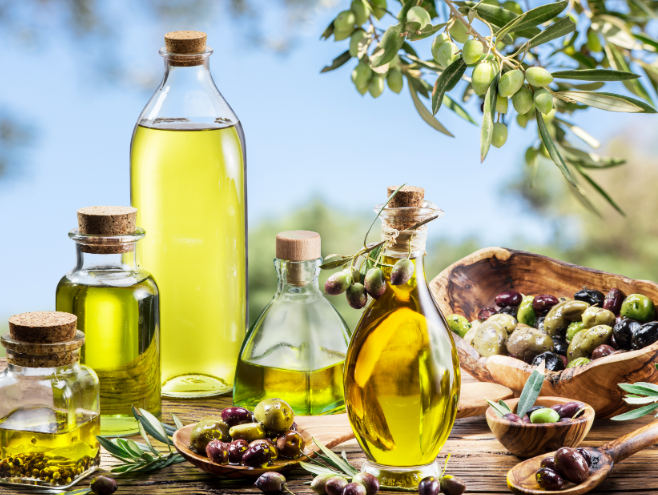
A Guide to Olive Oil Types and Smoke Points
Extra virgin olive oil (EVOO) is a versatile and beloved ingredient in many kitchens around the world. Its rich history dates back thousands of years, and its culinary applications are virtually limitless.
One crucial aspect of extra virgin olive oil that often goes overlooked is its smoke point, which can significantly impact its usability in various cooking methods.
In this article, we’ll take look into the different types and categories of olive oil, with a focus on their smoke points, to help you make informed choices in your culinary adventures.
Understanding Smoke Points
Before we get into the specifics of different olive oil types, let’s understand what the term “smoke point” actually means.
In layman’s terms, the smoke point is the temperature at which an oil starts to smoke and break down, releasing potentially harmful compounds and a burnt flavor into your food.
This is a culinary no-no, and choosing the right olive oil for your cooking method is crucial to avoid ruining your meal.
Extra Virgin Olive Oil (EVOO)
Let’s kick things off with a bang – extra virgin olive oil, or EVOO for short. This is the primo stuff, the crème de la crème of olive oils. Made from the first cold pressing of olives, it boasts a superior taste, aroma, and nutritional profile.
However, EVOO has a relatively low smoke point, typically around 375°F (190°C). This makes it ideal for drizzling over salads, dipping bread, and light sautéing.
But keep it away from high-heat applications like deep frying or searing, or it will start to smoke, break down, and lose its precious flavors and health benefits. Like butter, it could burn easily while cooking an egg, so extra care is needed when cooking with EVOO.
Extra virgin olive oil can be used in most of the same cooking applications as other non-olive oils.
Virgin Olive Oil
Not quite as fancy as EVOO, but still a respectable choice, Virgin Olive Oil is also extracted from the first pressing of olives and it has a slightly higher smoke point, usually around 410°F (210°C).
Virgin olive oil retains some of the distinct olive flavor, making it a good all-purpose cooking oil for those who want a hint of olive essence in their dishes, however the health benefits are diminished.
This oil may contain olive oils from various regions of the Mediterranean or even oils that are not produced from olives. It is produced by adding heat and chemicals during the pressing process.
Pure Olive Oil
Now, let’s talk about Pure Olive Oil. Despite the name, it’s not as “pure” as it sounds. Pure olive oil is a refined and filtered blend of virgin and refined olive oils, which gives it a neutral flavor and a higher smoke point, typically around 465°F (240°C). It is filtered many times and lacks almost all of olive oil’s health benefits.
It’s suitable for frying and other high-heat cooking methods. While it lacks the distinctive taste of olive oil, it’s a practical choice when you need a cooking oil that won’t add to the flavors of your dish.
Just remember that the health benefits are eliminated during the filtering and refining process. This does not mean that pure olive oil is bad for you, but pure (refined) olive oil is best used for high heat cooking when flavor and health benefits are not desired.
Olive Pomace Oil
If you’re looking for an olive oil type that can handle some serious heat, olive pomace oil is your go-to option. It’s made from the leftovers of the olive pressing process and goes through extensive refining.
As a result, it has a high smoke point, typically around 460°F (238°C). This makes it excellent for deep frying, grilling, and any other high-temperature cooking methods.
However, Olive Pomace Oil is the most processed of all olive oil types and lacks the health benefits and nuanced flavors of its less refined counterparts.
Blended Olive Oils
Blended olive oils are exactly that – a blend of different types of olive oils, often mixing EVOO or Virgin Olive Oil with more refined varieties. These blends aim to strike a balance between flavor and smoke point, making them versatile choices for various cooking applications.
The smoke point of blended olive oils can vary widely depending on the specific blend, so be sure to check the label for guidance.
In the world of olive oil, knowing your smoke points is the key to culinary success. Extra virgin olive oil may be the darling of salad dressings, but it’s a poor choice for deep frying.
On the flip side, Olive Pomace Oil can handle the heat, but it lacks the flavor and health benefits of its more virgin counterparts.
Virgin olive oil and pure olive oil offer a middle ground, suitable for a wide range of cooking methods, but they lack the health benefits of extra virgin olive oil.
So, the next time you’re in the kitchen, keep in mind the type of olive oil that best suits your needs. Whether you’re delicately drizzling fine EVOO over a salad or crisping up some French fries in olive pomace oil, understanding smoke points will elevate your culinary creations and ensure your dishes sizzle, but don’t smoke.
Please leave comments, questions or suggestions below.
Tom – Olive Oil Lover

